Situatie
One feature many overlook is the ability to track their weight directly in the Health app, which can be entered manually or automatically through a Bluetooth-connected scale. Here’s how to enter, track, and delete your body measurement data on your iPhone or iPad.
Solutie
It’s easy to track your weight in the Health app, but the category might be a bit hard to find by default. It may take a minute to relocate everything, especially with the revised designs in Apple’s iOS 26 operating system update.
To find it, first, open the Health app on your device. If you can’t find the app, swipe downward with one finger near the middle of your screen to bring up a search bar, type “health,” and then tap the Health app icon.
Once you’re in the Health app, tap on the magnifying glass at the lower right of the screen to see all the health categories. From the list, tap on “Body Measurements”. After you tap into the category, you’ll see a bunch of metrics ranging from body fat percentage to body mass index. Within the category, look for “Weight” and tap on it.
From there, you’ll see all the data imported into this section categorized into days (“D”), in the span of a week (“W”), a month (“M”), six months (“6M”), and over the year (“Y”). All data will be showcased on a plotted chart below.
Scrolling down in the section will show you different weight apps you can download that connect to Apple Health. You can change the unit used to showcase your weight and see a summary of where the imported data is coming from.
If this is your first time entering data into this section, don’t be alarmed if there’s no data in the chart. It doesn’t mean you’re weightless; you just need to start putting in data to be shown.
To add weight data entries, navigate to the corresponding section and tap the plus icon in the upper right. When you do, a menu will appear where you can input the information.
You can adjust the date of the entry, what time the entry was recorded, and—obviously—the weight that was measured. Once you input all that information, tap the checkmark icon in the upper right to save the data. Tap the x-icon in the upper left menu to cancel the entry.
To see the exact value of each plotted point, tap on it to view the amount and the date it was recorded. If you want to see all your data simultaneously, scroll to the bottom and tap “Show All Data.” This will display every recorded entry and where it was logged from.
If you don’t want to enter your weight manually each time, you can use a HealthKit-enabled smart scale that automatically does it for you. You’ll use the scale like any other, but instead of only showing the number on the display, it will sync the data directly to your device.
This process works via Bluetooth between your scale and iPhone. However, the data doesn’t go directly into the Health app. Instead, it syncs with the scale’s companion app—which you’ll need to connect before weighing yourself—and then transfers that information to the Health app.
However, for the scale to sync your weight, your iPhone must be unlocked and the app open. Otherwise, the data won’t transfer.
Body weight isn’t the only metric recorded by the scale—it also measures body fat percentage and Body Mass Index (BMI). This information is synced to the Health app along with your weight measurement.
How to Delete Recorded Weight Measurements
If you make a mistake or just want to delete a weight entry, go to the weight section in the Health app, scroll to the bottom, and tap “Show All Data”.
Next, you’ll see a list titled “All Recorded Data,” which displays all your weight entries over time. To delete one, tap “Edit” in the top-right corner, then tap the red minus button next to the entry you want to remove.
Finally, tap the “Delete” button that appears on the right of the data entry to remove it. Repeat these steps to remove additional entries.
If you want to start fresh and delete every entry, tap “Delete All” in the upper left of the screen and confirm your decision. This will remove all entries so you can start fresh.
Another way to delete entries is to go into the same section to see all your entered data and swipe from right to left on an entry to delete it easily. Once you’ve deleted all the entries you want to delete, tap on the checkmark at the top right of the screen.
If you don’t want to navigate through multiple menus to access the weight section of the Health app, you can add it to the pinned section on the Summary page for easy access. That way, it will be front-and-center every time you open the app.
To do this, navigate to the Weight section, scroll to the bottom, and tap “Pin to Summary” under the Options menu. Once selected, the pin icon on the right will turn gray and become a minus icon.
After it is added, return to the Summary section of the Health app and scroll to the bottom of your pinned topics. Newly added sections will appear at the bottom of the list.
Once you have it in your desired order, tap on the blue checkmark in the upper right of the screen to save the list order.
From now on, if you want to add a new weight entry quickly, open the Health app, tap “Weight” on your Summary page, and follow the same steps as before. Everything will be the same, but you’ll now have faster access to this section.

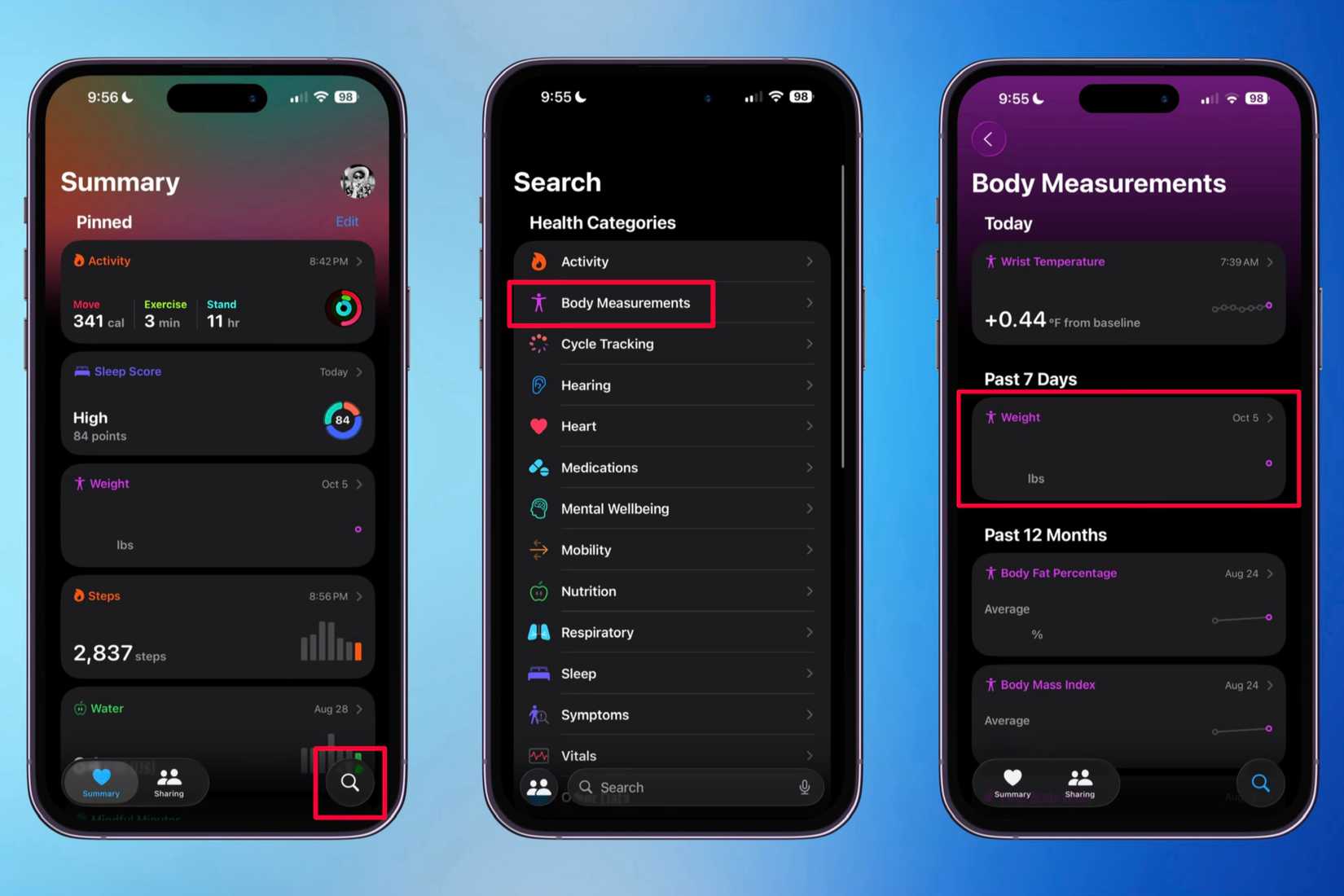
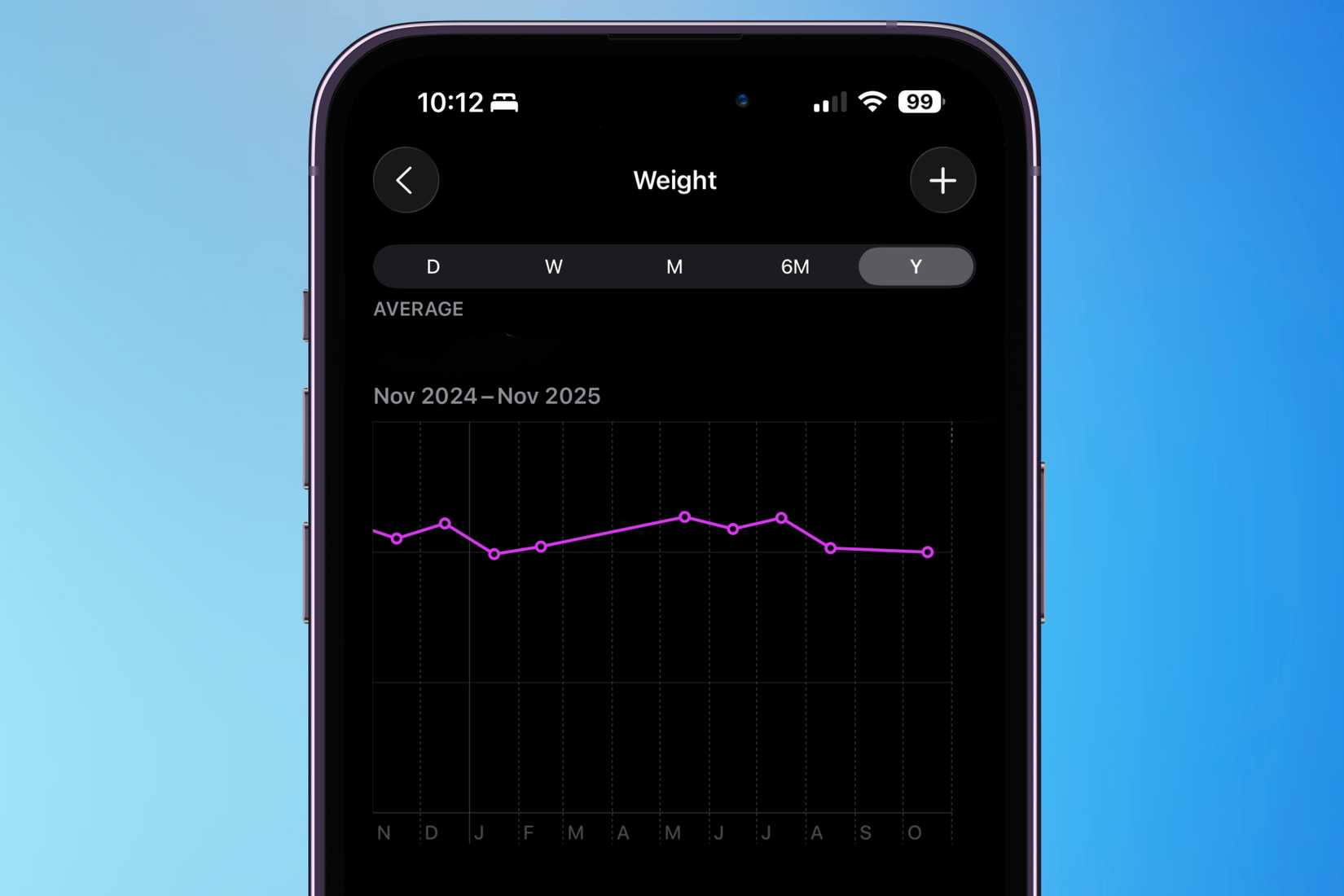

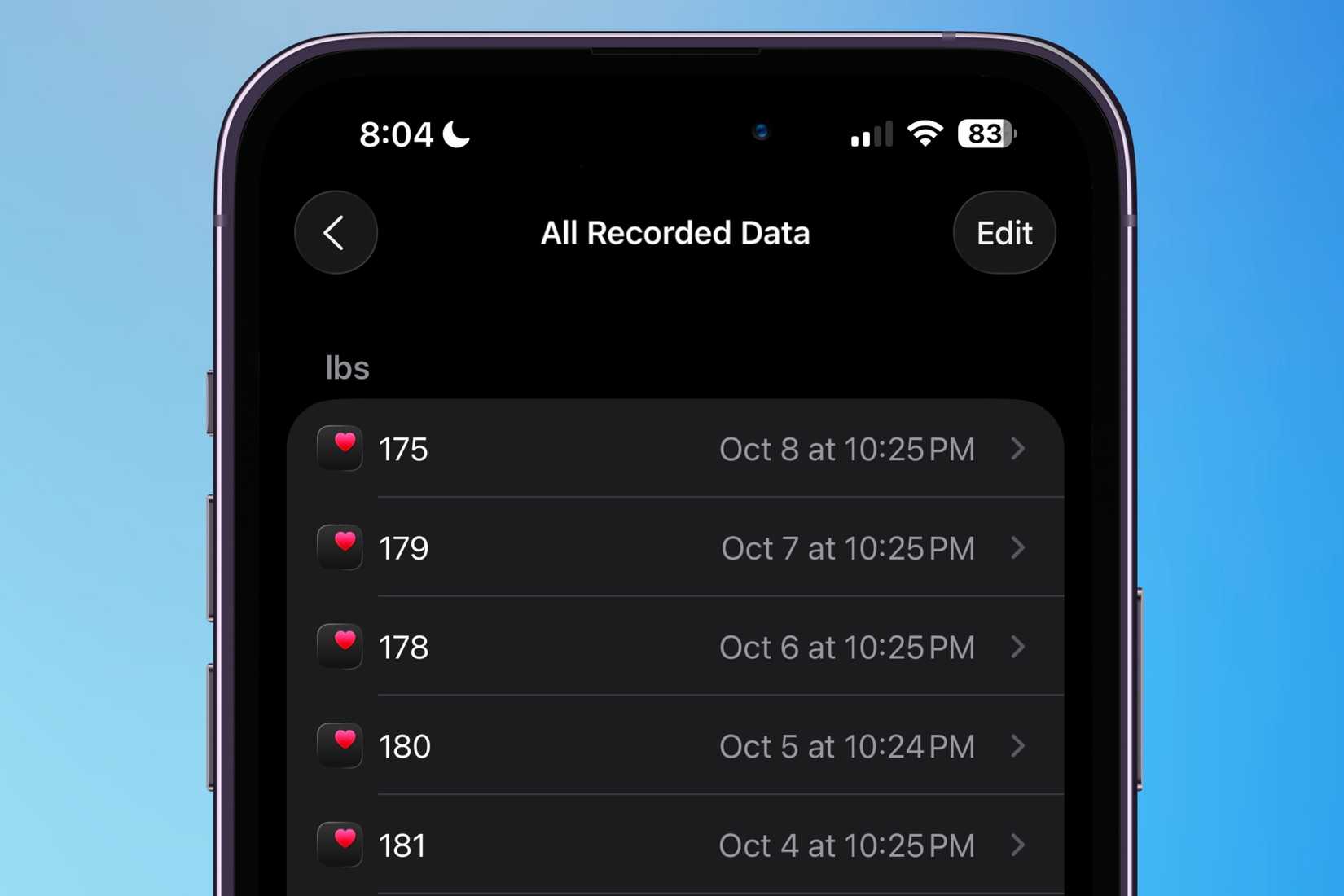
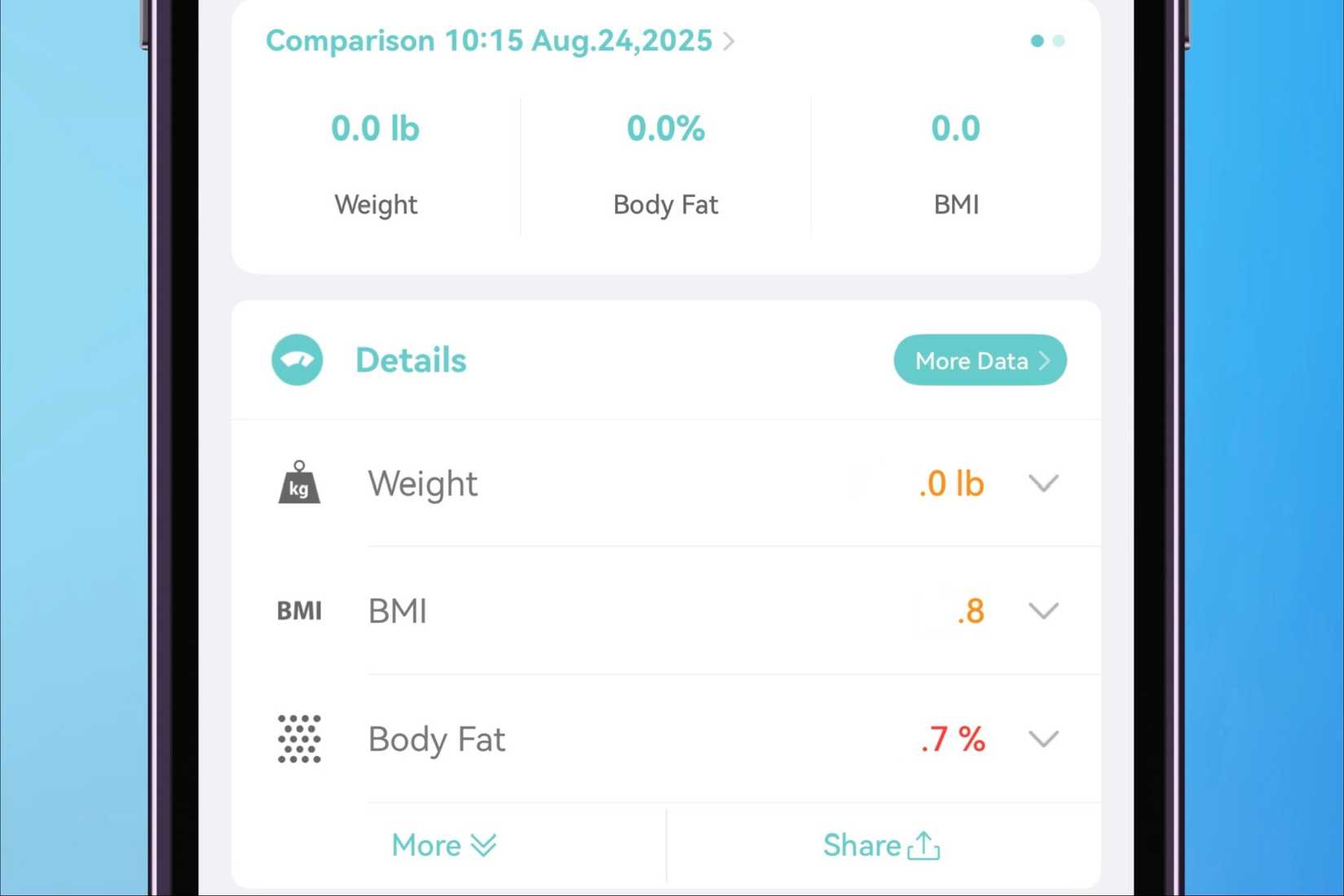
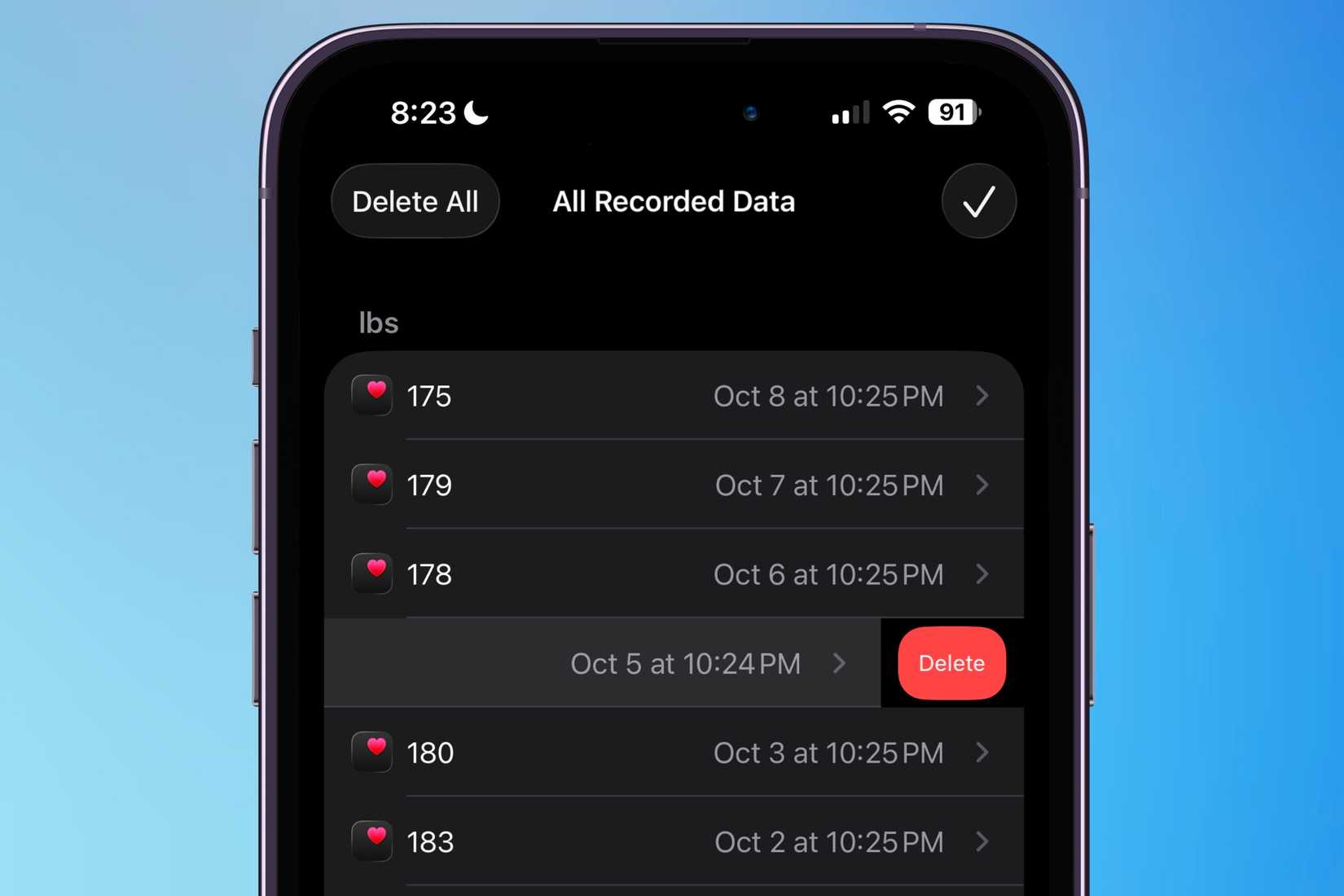



Leave A Comment?